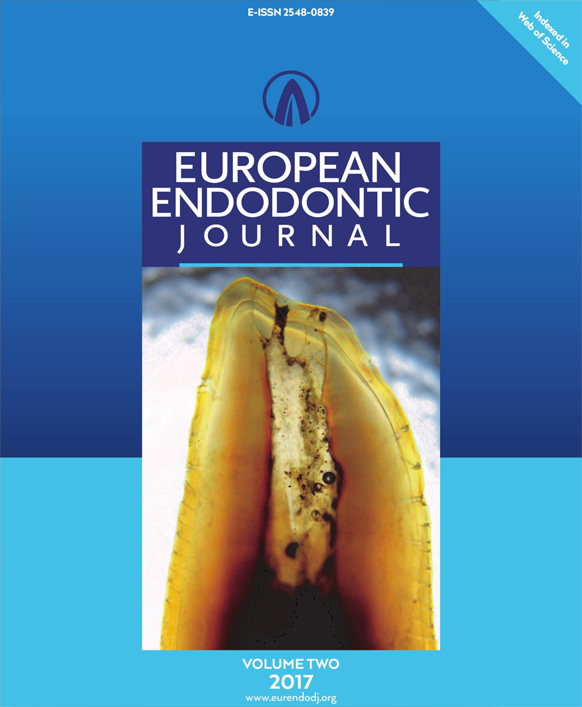
European Endodontic Journal
Yazarlar: Lara T Friedlander, Dawn Coates, Gregory Seymour, Mary Cullinan, Alison M Ric
Konular:-
DOI:10.14744/eej.2018.07269
Anahtar Kelimeler: Angiogenesis,Histology,Immature teeth,Mature teeth,Vascularity,VEGF,VEGFR2,Vital pulp therapy
Özet: To examine the microvessel density (MVD) and spatial distribution of endothelial cells and angiogenic activity in immature and mature permanent teeth using immunohistochemistry. Methods: Healthy third molars with immature and mature root development were formalin-fixed, decalcified in 10% ethylenediaminetetraacetic acid, and processed for routine immunohistochemistry with endothelial cell markers anti-CD34 and anti-CD146 and angiogenic markers anti-vascular endothelial growth factor (VEGF) and anti-VEGF receptor-2 (VEGFR2). Staining was visualized with diaminobenzidine and examined using light microscopy. The distribution of markers was analyzed qualitatively and quantitatively in the coronal, middle, and apical regions of the dentine–pulp complex. Results: There were spatial differences in protein expression for immature and mature teeth. The pulps of immature teeth were more vascular, had a greater number of CD34+ and CD146+ cells, and a significantly higher MVD in the coronal region than those of mature teeth (P=0.03). The apical papilla contained few blood vessels. VEGF/VEGFR2 activity was significantly greater for immature teeth (P=0.001). VEGF was expressed throughout the pulp–dentine complex, but there was significantly more growth factor coronally (immature P=0.04 and mature P=0.02). VEGFR2 was expressed less than VEGF but was seen on the endothelial cells and single cells unrelated to a vessel lumen. Conclusion: The spatial distribution of vascular and angiogenic (VEGF/VEGFR2) markers indicates the potential for altered healing responses in the pulps of immature and mature teeth. Immature teeth have a greater MVD and VEGF/VEGFR2 expression than mature teeth, and the increased expression of these markers in the coronal region of both tooth types is important for pulp healing.